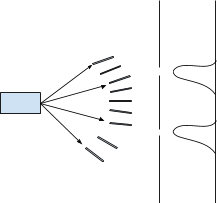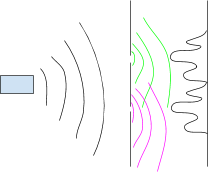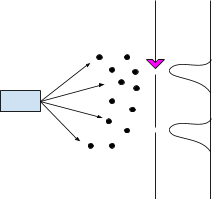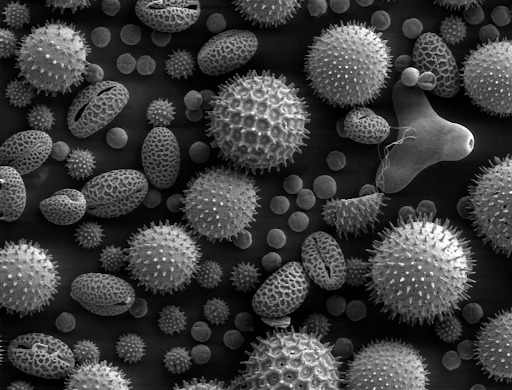Photo

I’ve had it with youtube and its bullshit. Scary movie ads can be really triggering. We all know this. I want youtube to SEE this and DO something. Get famous youtubers on this. Get attention. Please. Make it all stop. Make them skippable. Make the unskippable ones not have scary things. Make youtube safe for people who not just want but NEED it to be.
46K notes
·
View notes
Text
please read
Hello everyone! I hope you’ve been enjoying my blog and my recent essay. Something has come up recently unfortunately where I need money to pay for my housing. I got an extension fee which I was not informed on at first. In total I need $140 to pay my housing, but I have about $60, so I think I’d need about $80 just to be in the clear. But I’m also freaking out because I’d literally have no money left over. The $60 i have is for stuff like food and clothes and I’m trying to save it. So like, if you can donate anything, just anything to help me out please do so. This came as a surprise to me and I need the money soon!
Here is my paypal
And my cash.app is $Averies.
Please donate and reblog if you can! Please please reblog this I really need help. Please give this the same attention you give my other posts. It would be a lot to me.
542 notes
·
View notes
Text

UPDATED ON JULY 2017
Here you can find videos with advice on different categories related to college and studying! Just click on whatever topic you’d like to learn about :)

10 Bullet Journal Hacks and Ideas
Tips on How to Start a Bullet Journal
New Bullet Journal // Leuchtturm1917 [Mid 2017]
Minimalistic Planning Routine
My Planner Setup for 2016
Bullet Journal Setup for 2016
Bullet Journal 101
How to Plan for Final Exams
Bullet Journal Doodles and Decor
Plan with Me: Monthly Spreads
My Planning Routine
Bullet Journal [Early 2017]

How to Color Code your Notes
New Note Taking Method // Cause and Effect
How to Chose between Typed and Handwritten Notes
How to Type Notes for College
How to Take Notes from Textbooks
The Best, Fastest, Note Taking Method
Binder Tour 2015
Binder Tour 2016
Study Guide 101
Note Taking Tips and Advice for Typed Notes
How to Improve Typing Speed
How to Take Comparison Notes
Minimalist Binder Organization
Taking Notes with Microsoft OneNote
My 4 Types of Handwriting
The Cornell Method with Typed Notes

How to Be More Productive
The Ultimate Study Guide - 40 Tips
2 Different Ways to Use Sticky Notes
How to get Inspired to Study
Lecture Organisation and Preparation
How to have Efficient Study Breaks
How to Balance College and Life
My Study Routine
How to Have a Productive Summer
The Pomodoro Technique
How to Review and Study for Exams
How to Improve Handwriting
Time Management Tips
5 Tips for Exam Revision
College Organization Setup
How I Study for Tests
Presentation/Public Speaking Tips
Things I Wish I Had Known Before College

A Day with Me at Starbucks
My Evening Study Routine
My Morning Study Routine
Study With me For Exams // Timelapse

Huge Stationery Haul [2017]
Top 5 Best Websites for Students
ANDROID Apps for Studying and Time Management
School Supplies for 2016
The BEST Highlighters for Studying
My Favorite Pens for Handwriting
Desk and Study Space Tour
Minimalist Notebooks // mishmash
7K notes
·
View notes
Text
Quantum Mechanics is Weirder and Cooler Than You Think
Introduction
Quantum mechanics has to be one of the most interesting branches of science because it encompasses phenomena that is reality-defying and appear unreal and mysterious. We live everyday life in a macroscopic world where our daily experiences have shaped our knowledge and intuition about the laws of physics, giving us the ability to predict the future. Unfortunately, when things get infinitesimally small, they don't behave as we’d expect them to. In fact, they behave so differently that there is an entire field of physics dedicated to explaining this. One main challenge with quantum mechanics is that since we can’t physically observe things at the quantum scale either, we can’t develop much intuition either which adds another barrier to a thorough understanding. Despite this, scientists have been able to make a lot of progress in understanding how quantum mechanics works through the use of experimentation and mathematical modeling. Here is a brief introduction to quantum mechanics that explains some of the fundamental concepts that govern this field.
All of quantum mechanics is built on the concept of wave-particle duality which basically states that when matter gets small enough, it begins to exhibit wave-like and particle-like behavior. In order to explain what this means, we need to look towards the double-slit experiment which demonstrates this unique and mysterious property and also propagated the remainder of quantum mechanics research.
Double-Slit Experiment
The double-slit experimental setup is comprised of a wall with two slits cut out within the middle region of the wall and a screen is placed behind the wall which will measure what passes through. Throughout the experiment, macroscopic bullets, water waves, and electrons will be emitted and the pattern that is developed on the screen will be investigated.
For trial 1, bullets will be shot and the pattern will be recorded. The resulting pattern looks like a bullet spread where towards the center of the slits openings, the bullets are most likely to be found (the peak of the humps). There are only two bands present with using bullets which demonstrate the bullet-like behavior. Nothing too special here with trial 1.

Trial 1. Bullets Demonstrating Particle-like Behavior
For trial 2, water waves will be emitted and once again the pattern will be recorded. The resulting pattern is an interference pattern that is caused by constructive and destructive interference of waves. Since the initial wave that is emitted is propagated into two smaller waves at the slit openings, the new waves interact with each other, basically adding and subtracting to form the resulting pattern that is observed. Once again, the areas near the slit openings have the highest probability distribution. There are several bands in this pattern which once again demonstrates the wave-like behavior. Nothing too special here with trial 2.

Trial 2. Wave-like Behavior
For trial 3, quantum sized matter, such as electrons, will be emitted towards the wall and the pattern will be recorded. When electrons are emitted, the resulting pattern demonstrates the same wave-like behavior observed in trial 2. Now where things begin to get interesting, when we close one of the slits and leave the other alone, we observe the same bullet-like behavior witnessed in trial 1. So how is it possible that we are able to observe a bullet-like and wave-like behavior with electrons depending on the number of slits that are open? Why does closing one slit and leaving the other open cause this contradiction?

Trial 3. Electrons With Both Slits Open

Trial 3. Electron With Only One Slit Open
To investigate this paradox, let’s take this experiment a step further and place an electron detector at one of the slits and leave the other slit open and alone and record the pattern. The electron detector will tell us if electrons are going through the slit it is positioned at. It turns out that the resulting pattern looks exactly like a bullet-spread. For some weird reason, when we observe the system, (in this case, the electron detector is physically observing if an election passes the slit it is monitoring) particle-like behavior develops, but when no observation is made (no electron detector), the pattern developed is wave-like.

Trial 3. Electrons With Detector
Discussion
In quantum mechanics, we utilize something called the wave function, which is responsible for describing all the possible states which an electron can exist in, in a given system. In this experiment, there are only two possible states for the electron to exist in since there are only two slits available. While no observation is made, the wave-like behavior is demonstrated. The peaks seen in a wave-like pattern are essentially the “probabilities” of where the electron can be found, where the fatter the peak, the more likely the electron is to be found there. The key thing to note is that this pattern can only exist if the electron travels through both slits simultaneously because otherwise, diffraction could not occur so there would be interference pattern to begin with. Yes, the electron exists in both states (it has traveled through both slits) at the same time. If we were to shoot a single electron at a time, you guessed it, we would still see wave-like pattern. I know this is crazy but this was experimentally proven.

Trial 3. Electron Wave Probabilities
What made things even more weirdness and counter-intuitive was when we place an observing agent and spied on one of the slits. If we shoot electrons at the experimental setup and quickly turn on the electron detector, we would notice a change in pattern from wave-like to particle-like behavior. The very act of observing the system affected the system to the point where it caused the wave function to collapse and force the electron to make a move. It’s almost as if the electron has already predicted its future before we even made the observation. If you shoot a million electrons at the setup with the electron detector turned on, 50% of the time the electron would go through the top slit and vice versa.
Applications
Scientists and engineers have utilized the properties of quantum mechanics in developing technology that has had major impact on society. First, one of the most significant technological advancements in history is the solid-state transistor which is used in everyday electronics. This technology utilizes electron transport and superposition of states that gives rise to their “on and off” functionality. Next, many spectroscopies and imaging techniques such as Raman Spectroscopy, Nuclear Magnetic Resonance Spectroscopy, and Scanning Electron Microscopy utilize quantum mechanical interactions with materials to understand their chemical properties and also to image materials that cannot be seen with a regular microscope. In addition, quantum mechanics has also allowed for computation and modeling which is one of the most important fields in research. This allows for scientists to conduct theoretical quantum mechanical experiments and design novel materials. Lastly, some newer applications of quantum mechanics includes photovoltaics (solar cells) and quantum computing which are hot topics in research and development today. Solar cell research is directed towards achieving better efficiencies in energy conversion while using abundant and cost-effective materials. Quantum computing research is directed towards building the first fully-functional quantum computer to run simulations that would normally take anywhere from months to years to due the limited speed that is seen with the fastest performing computer today.

Transistors on Chip

Quantum Computer

Solar Panel

Scanning Electron Microscopy Image
Conclusions
A lot of these concepts presented are pretty unintuitive and difficult to grasp because quantum mechanics is it’s own field on its own that is full of reality-defying concepts. In order to truly begin mastering quantum, you have to ditch any previous knowledge of physics and look at this material with a fresh lens because quantum behave so dissimilar to anything most have experienced and making any sort of intuition might be misleading. We know that this phenomena exists because it has been experimentally proven but our understanding of why these things happen is limited. Even to this day, no one really knows why observing a system causes a shift from wave-like to particle-like behavior. There are theories on why this could have happened (see quantum entanglement), but there is still work needed to be done in order to crack this seemingly unsolvable mystery.
I hope you were able to learn a thing or two about quantum mechanics.
164 notes
·
View notes
Text
Soda: How to make a lot of it
Remember the last time you took a sip from an ice-cold Coca-Cola and savored its sweetness and deliciousness as the splash of soda groped and aroused each and every individual taste bud? A sugar-full taste followed by a stingy sensation that prompted you to keep on drinking more and more. In case you were unaware, there is actually quite a lot of engineering that participates in producing that perfect bottle of Coca-Cola. Have you ever wondered how Coca-Cola is produced for the billions of people that inhabit the Earth? Assuming half of the population drinks one 20 fl. Oz bottle per day, a production of around 1.2 billion gallons of Coca-Cola daily needs to be reached daily. To put this into perspective, this is equivalent to around 911 Olympic swimming pools worth of soda. I know these numbers can seem very overwhelming and almost seemingly impossible to achieve, but luckily there is an entire field dedicated to solving these sorts of problems.
I welcome you to the field of chemical engineering where we specialize in scale-up of chemical processes to deliver consumer products for the world. Many fields such as food, clothing, electronics, medicine and others utilize chemical engineering to make these products in large enough quantities for the world to enjoy. Throughout this discussion, I will briefly explain my thought process for starting a processing plant capable of producing soda for billions of people.
Step 1. Find a team
Starting a company is not a one person job especially for something as technical and massive as creating a soda plant. There is simply too much work to handle alone, so the first course of action is to find engineers that are competent and interested in this project.
Step 2. Planning
A plan needs to be developed that is both scientifically and economically feasible. Each step of the process must be able to physically occur which is oftentimes difficult to assess solely off of our intuition alone. As you can imagine, there are many components of a processing plant such as reactors, pipes, tanks, heaters and more that each need to be carefully constructed in order to assure that they will do their job correctly. As engineers, we like to work smarter not harder,so we utilize computer simulation software to help handle all the calculations. After a design is complete, a small scale of the plant must be built and tested in a laboratory examine if it will work. This serves as a safety net because the last thing you want is to investment millions of dollars in a plant that in the end doesn’t work.
Economics is another aspect that needs to be considered. The plant must be profitable in order to see a good return on investment so the economics will have to be modified as much as possible to a desirable return. This can include changing your output to produce more product and optimizing processes to minimize energy consumption. Plant optimization will lead to several iterations/updates of your plant, each implementing new and improved modifications to better optimize the total cost. By the end of your project, you might have fifty different versions of your plant which goes to show the difficulty of achieving a desirable plant optimization.
Selecting the type of processing method should be the first step in designing a plant as every step afterward stems off from this point. There are really two methods of processing will be briefly discussed, Batch Processing and Continuous Processing.
Batch Processing
Say you were preparing soda in your household kitchen, you would grab a pot and add your ingredients, heat and stir then arrive at your final product. The term “batch” refers to adding all your ingredients simultaneously and forming the product all at once. In terms of practical scale-up, you would a large enough reactor capable of handling large volumes. The larger the volume of the tank, the less amount of tanks you need in order to reach the target volume. A reactor tank can only hold so much volume so you have to ensure that the size selected is within reason. Despite this method sounding oversimplified, most chemical processes utilize this method because of its simplicity and effectiveness.
Continuous Processing
Using the pot analogy, let's assume a modified scenario. Instead of pouring all the ingredients at once and form product in batches, let's flow the ingredients at certain rates and form soda continuously. This is an advantage over batch processing because to make more product, more ingredients just need to be flowed and the process usually never stops. In batch processing, you have to repeat the process several times until you make enough product. The drawback to continuous processing is that maintaining this process is often difficult to achieve because there are a lot more detrimental and difficult to control parameters that are of a consequence with using flows. Most processes today are often too complex to adopt a continuous processing method and as a result undergo batch processing.
From the two processing methods presented, I would choose the continuous processing method since it might feasible for this project due to not seeming too complex at first glance. The plant would utilized what is known as a Continuous Stirred-Tank Reactor (CSTR for short) and pipes connected to it from both sides. The front side pipes would flow in the ingredients and the back side pipes would carry the formed soda. From here, the soda will need to undergo filtration in order to remove any solid reactants that weren’t completely reacted. After the filtration step, the soda will be complete and ready for packaging and shipping. To scale this up, multiple reactors that are capable of handling large volumes would need to be used. This arrangement can be copied and pasted as many times in order to reach the target volume that needs to be produced.
Step 3. Shark Tank
Now that a plan has been finalized, it is now time to turn the design into reality. This will require a source of funding that within tens of hundreds of millions of dollars. The most popular option is to seek a venture capitalist who has the funding that is needed to build the plant. This requires a business pitch that is convincing enough for a venture capitalist to invest in your idea. The content that will be presented must include a pitch, plant visualizations and attractive economic analysis. Venture capitalists will want to own a certain percentage of your company in return for lending you the investment that is needed so you will need to negotiate and hope for the best.
Review
Starting a plant is a lot more difficult than what I briefly explained but with this simplified discussion you should have learned the thought process behind taking an idea of creating a reality from in. All startups had to go through some sort of brainstorming, plant drafting and business pitch process in order to get to where they are today.
7 notes
·
View notes